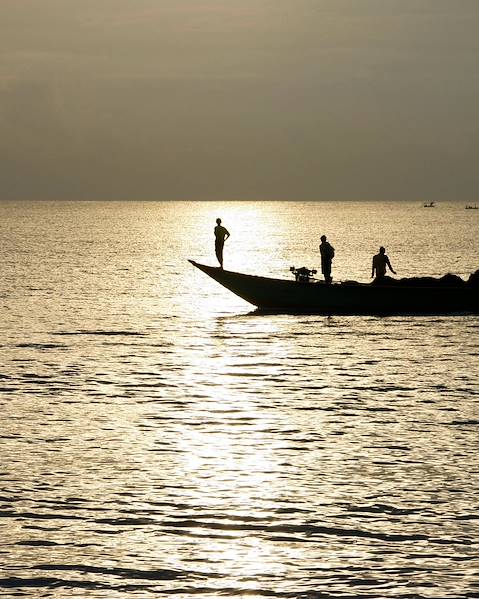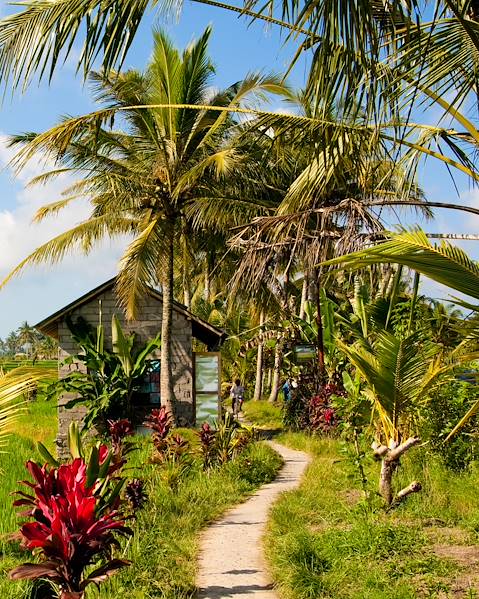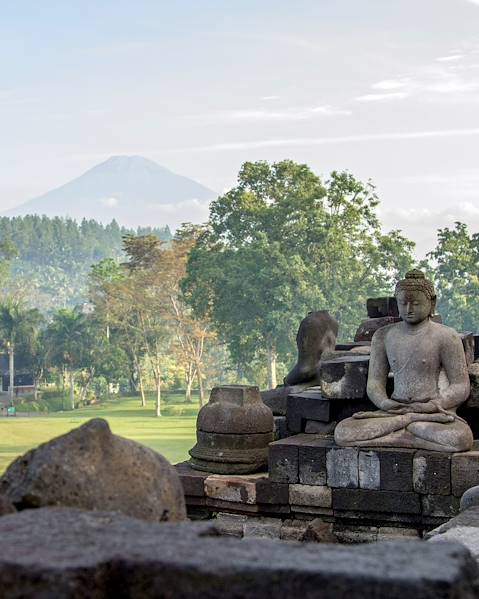Experiencing the transport in Indonesia is something of an adventure. With its bustling cities, diverse landscapes and unique modes of transportation, getting around this Southeast Asian archipelago nation is an experience like no other. So, let’s dive into the unpredictable world of transport in Indonesia, from the congested streets of Jakarta to the winding roads of Bali.
By Bajaj and Ojek
When it comes to a guide on the transport in Indonesia what better place to begin than with the iconic bajaj and ojek? A bajaj is a three-wheeled vehicle, like a tuk-tuk in other parts of Southeast Asia, and a common sight in cities like Jakarta and Surabaya. However, when it comes to navigating through the traffic, nothing beats the convenience of an ojek. These motorcycle taxis are a popular mode of transport in Indonesia, especially in urban areas. Experience the thrill of hopping on the back of an ojek, the negotiation skills required, and the sense of freedom they provide. Just hold on tight as you zip through the streets.
By Car
Driving in Indonesia is not for the faint-hearted, but it’s an experience like no other. The chaotic traffic, omnipresent motorcycles and the need for patience and defensive driving make for a wild ride. Let’s start with the most obvious aspect: the traffic. Be prepared for jams, pushy drivers, and a constant symphony of honking horns. Lane splitting is a common practice, so keep an eye out for motorbikes squeezing through tight spaces and appearing seemingly out of nowhere. Then there are the unwritten rules of the road, which may seem confusing to outsiders. For example, flashing your headlights can mean anything from ‘I’m coming through’ to ‘thank you.’ It’s also common to use hand signals to communicate with other drivers.
By Taxi
Taxis offer an affordable and less stressful way to navigate the mayhem that often characterises the streets of Indonesian cities, particularly Jakarta. They are commonplace, and you won’t have to wait long to flag one down on any main road. Just allow plenty of time to get to your destination, even short distances feel like an age when you’re crawling along at ten miles per hour. Make sure the meter, often referred to as the argo, is on and working properly before you get in. Taxis can be ordered by phone, though you may find yourself waiting a while for some of the smaller companies. The increased use of smartphones and convenience of digital payment have boosted the growth of ride-hailing apps in Indonesia, which have overtaken traditional taxi services in popularity. Companies like Gojek and Grab dominate the industry with their premium car and food delivery services.
By Bus
Indonesia has an extensive network of domestic buses and long-distance coaches that connect different parts of the country, the standard of which can vary greatly. In general, the buses in major cities tend to be more modern and comfortable than those in rural areas, but overall, the buses are generally safe, reliable and affordable. State-run bus services operate in every province of the country and private operators also provide a range of services, including luxury coaches, sleeper buses and air-conditioned buses. There are several types of tickets available: economy tickets are valid for one journey on a specific route; executive tickets allow you to travel on a more comfortable and air-conditioned bus with fewer stops; sleeper tickets are available on some long-distance coaches and include a comfortable berth for overnight travel; and finally, premium tickets allow you to travel on a luxury coach with additional amenities such as WiFi and meals. You can buy bus tickets at bus terminals or onboard the buses. Many bus companies also offer online ticket booking services.
By Boat
As you would expect from the largest archipelago in the world, boats are ubiquitous in Indonesia and are an inexpensive way to explore the country, if you have time to spare. Pelni is the largest and most well-known boat company that ferries passengers (but no vehicles) across the entire archipelago from east-to-west and north-to-south. Each ship completes a circuit of several ports over a few weeks, before returning to the original place of departure. Pelni ships are extremely slow and travellers should expect to spend several days on board so be sure to check the length of time for the trip. There are six classes of accommodation, the best being double cabins with their own bathroom and shower. If tickets are oversold, passengers are allowed on board, but without a bunk, and many end up sleeping on deck. Some ports offer ferry services for cars, trucks and buses. They also accept passengers, but sleeping accommodation is rarely available and those who board with a vehicle sleep in it. Regardless of whether you’re hopping between the islands of Bali and Lombok or exploring the remote corners of the archipelago, ferry rides offer a chance to savour the beauty of the sea.
By Train
Indonesia’s railway system is mostly restricted to the island of Java, with limited services in Sumatra. The major destinations in Java are Jakarta, Yogyakarta, Surabaya, Malang Probolinggo, and Banyuwangi. There are three train classes in Indonesia: executive, business and economy, all of which offer a good level of comfort. Apart from short-distance economy class, all are air-conditioned and have sockets for charging your electronics. One thing to note: if you’re looking for the fastest route, avoid trains with only economy-class cabins. Instead, book trains that are attached to business or executive-class carriages, which make fewer stops so you can reach your destination quicker. If you’re booking online, you can easily spot them by checking and comparing the travel time.
By Traditional Transportation
Indonesia is also known for its traditional modes of transportation. Cycle rickshaws, called becak, are a regular sight on city roads and provide inexpensive transportation. Alternatively, try a horse-drawn carriage, known as dokar, for a nostalgic and cultural experience. Take a leisurely ride through the narrow streets, learning about the history and significance of these time-honoured and charming forms of transport.
















